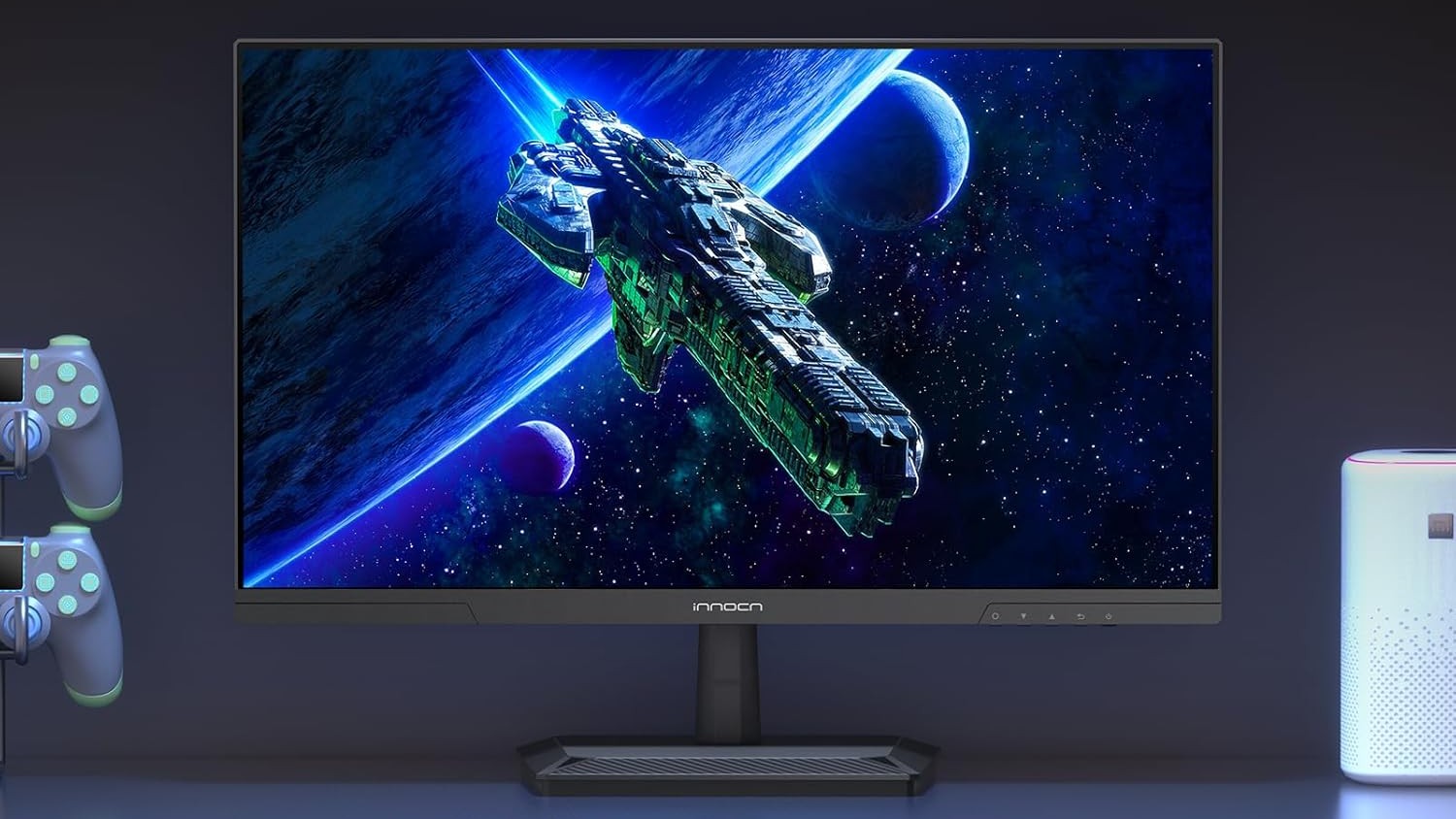Samsung's Notebook 9 15 review: great power and battery life in a plain package
For 2018 the Notebook 9 15-inch balances power and performance with a traditional design.
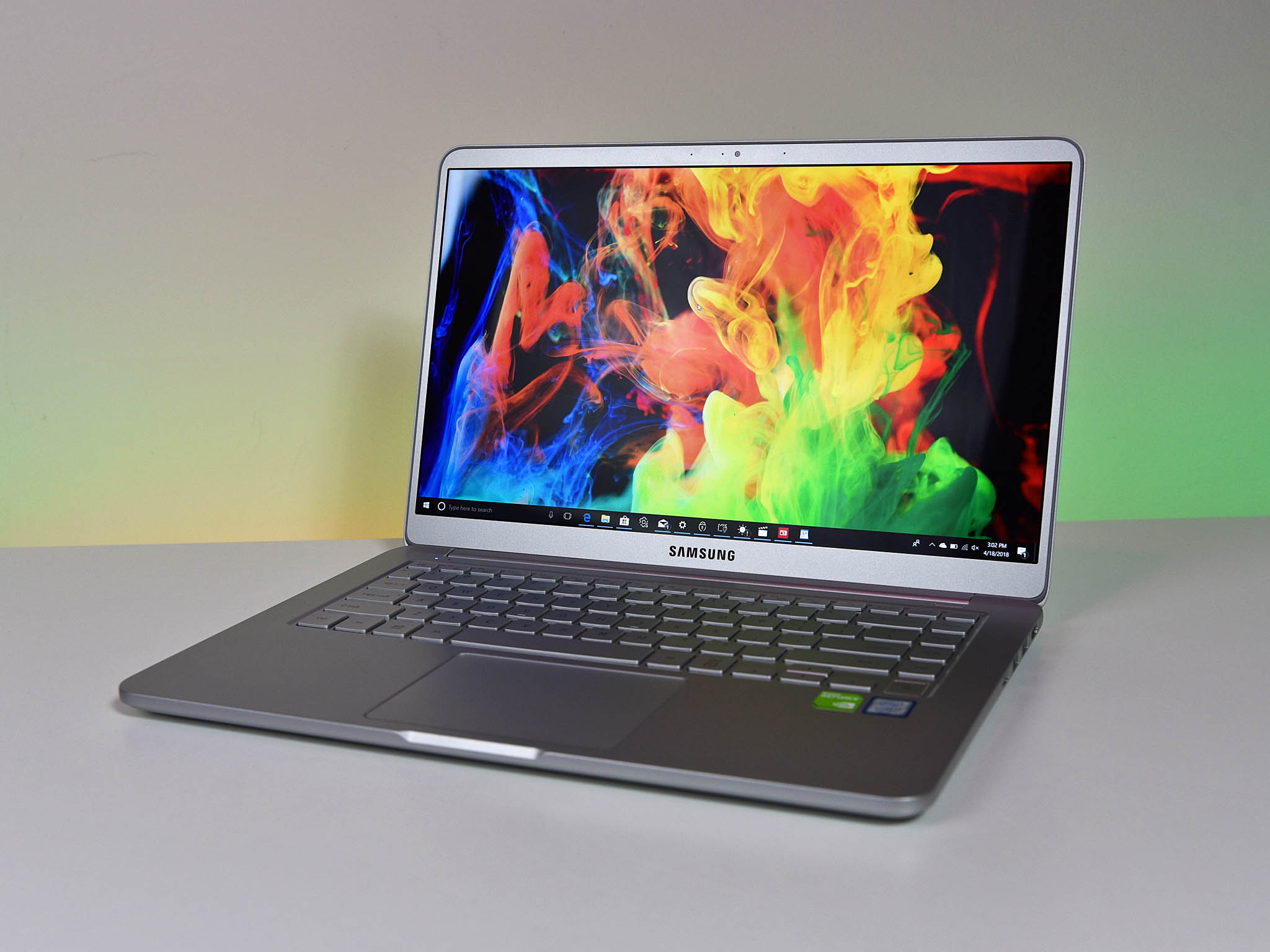
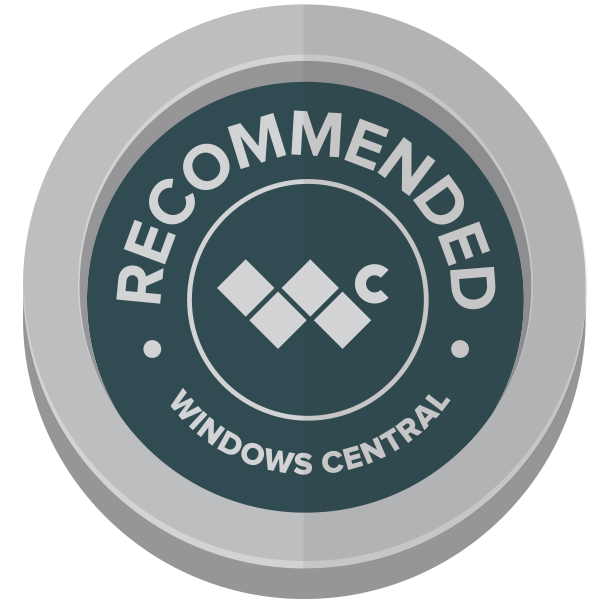
PC laptops tend to embrace the 2-in-1 design features idealized by Microsoft, but there is still a significant market for "traditional" styles. Lenovo has the X1 Carbon, HP has the Spectre 13t, and Dell's XPS 13 (9370)is still quite basic.
Last year, I reviewed the Samsung Notebook 9 15 Ext and loved its simplicity and excellent fundamentals. For 2018, the company has kept the same formula but bumped the specs. It works, but the competition is creeping up on Samsung. Here is what I like and don't about this year's Samsung 9 15 (NP900X5L-K02US).
A powerful, but traditional laptop
From the exterior, nothing is shocking about the Samsung Notebook 9 15. It is still a combo of metal and plastic, which results in an exceptionally light 2.76lbs (1.25kg) frame. That is slightly lighter than last year's model at 2.9 pounds.
Samsung doesn't cut any corners though when it comes to internal hardware. Make no mistake this is a powerful notebook, especially with that dedicated NVIDIA graphics processor.
| Category | Samsung Notebook 9 15 |
|---|---|
| Processor | 8th Generation Intel Core i7-8550U |
| Memory | Up to 16GB (DDR4) |
| Storage | Up to 1TB SSD (NVMe PCIe) |
| Graphics | Intel HD 620 Graphics / NVIDIA GeForce MX150 (GDDR5 2GB) |
| Display | 15.0" RealViewDisplay Full HD (1920 x 1080) |
| Keyboard | Backlit KBD, Precision Touchpad |
| Material | Metal (Mg) |
| Camera | 720p |
| Stylus | N/A |
| Ports | Thunderbolt 3 USB-C x 1, USB 3.0 x 2, HDMI X1, microSD, headphone/mic |
| Security | Fingerprint Sensor |
| Power | 75Wh |
| Weight | 1.25kg (2.76lbs) |
| Dimensions (W x H x D) | 347.9 x 229.4 x 15.4mm |
| Colors | Titan Silver/Crush White |
| Price | $1,299 (Intel HD 620 Graphics), $1,499 (NVIDIA GeForce MX150) |
The 8th gen Intel processor is of the quad-core variety, though still 15W. Thermals and clocking are very good for it with Samsung not holding it back.
For those who need some graphics punch the MX150 from NVIDIA replaces last year's 940MX. It does quite well too and is the full 25W version (1D10) giving it 48,536 on Geekbench for CUDA compared the Huawei MateBook X Pro's 10W MX150, which yielded 41.593 on the same test. That puts the MX150 close to the NVIDIA 960M, which was considered a mid-range gaming GPU in 2015.
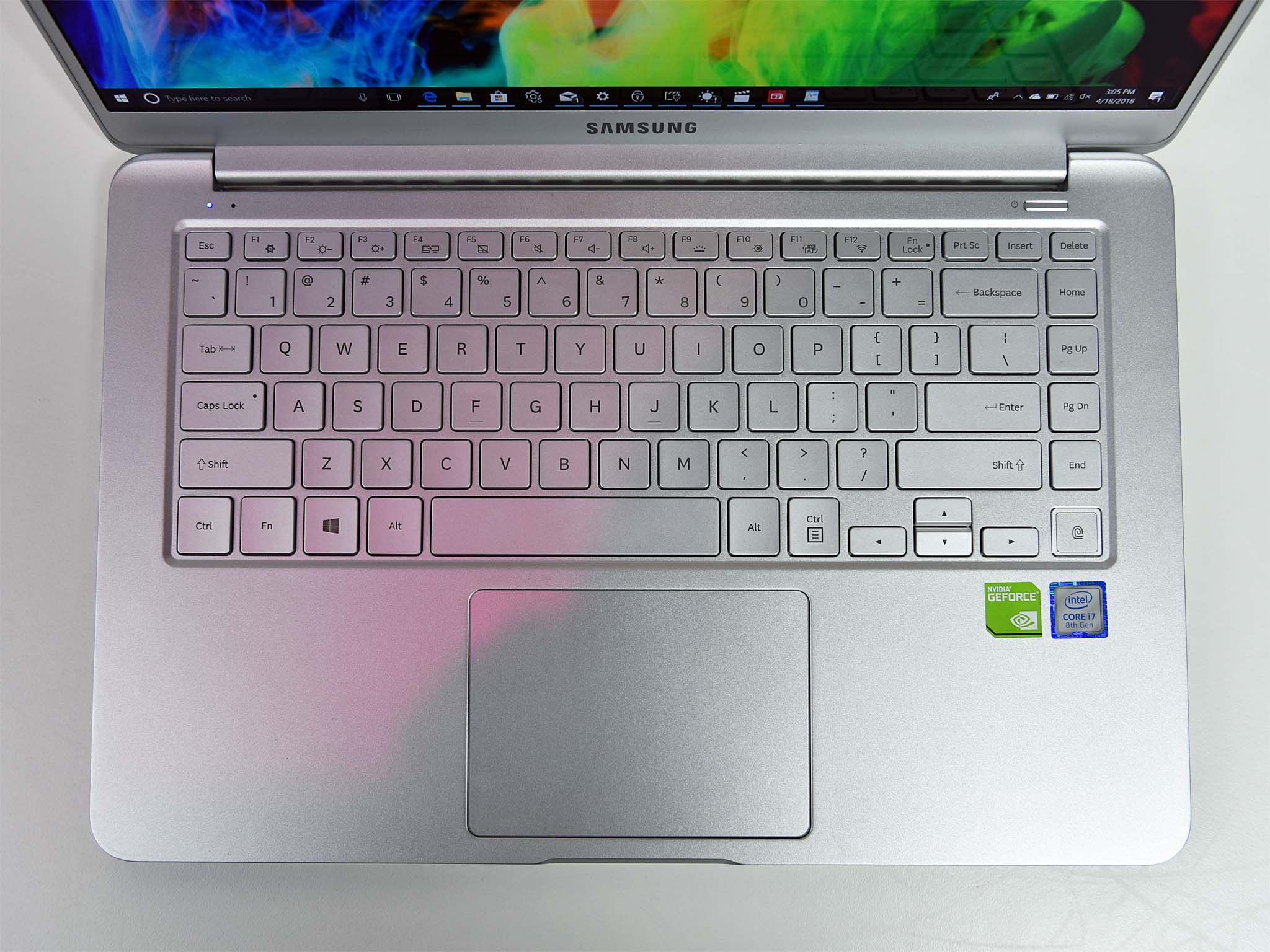

The SSD is also no slouch, with near 3k for reading and 2k for write thanks to the Samsung PM961 hardware. Users can upgrade to the even faster PM981 but make no mistake this is already a quality storage solution.
Get the Windows Central Newsletter
All the latest news, reviews, and guides for Windows and Xbox diehards.
Even the RAM is now DDR4, which is uncommon. Most laptops we've tested still come with the slower DDR3-type.

The display is the one area where Samsung holds back – likely for battery life – with a 1920 x 1080 full HD semi-gloss/anti-reflective panel. It's a very good LED display with 97 percent sRGB for color accuracy and brightness at 350 nits, but the ability to "boost" to 500 nits for the outdoor mode.

That brightness lets this be a semi-HDR compliant display, but it's no match for the official Dolby Vision HDR found in the X1 Carbon and X1 Yoga. Still, the contrast and deep blacks are far above the average. But being non-touch and lower resolution at a true 15-inch size is a bit of a downer.
While Samsung does not use an infrared (IR) camera for Windows Hello it still has its dedicated fingerprint reader on the keyboard deck. That sensor, thankfully, is a good one with very fast read times (especially compared to Lenovo's fingerprint readers).
Power, performance, and all the right ports

So long as you approach the Samsung Notebook 9 with your expectations set correctly, nothing will truly disappoint.
The keyboard is slightly mushy for some but is still excellent for typing with good travel and response – it's one of my favorites. The trackpad is massive and full Precision, rivaling the quality of the Surface Book 2.
Battery life is off the charts thanks to the huge 75WHr battery. Real-world usage is past the 10-hour mark, which is something not seen that often. Even the GPU, while not a full gaming one, is just the right boost for web browsing, light gaming, image editing, and more.
The ports also strike the right balance. You have a few USB Type-A's for your peripherals, but a dedicated USB Type-C with full Thunderbolt 3 (4x PCIe) for external GPUs, powering multiple 4K displays and more. While Samsung does toss in a small barrel-type AC charger, that means you can use the Type-C port for something else (though it can charge the laptop too). The microSD slot is a little disappointing, but common for a business-focused laptop.
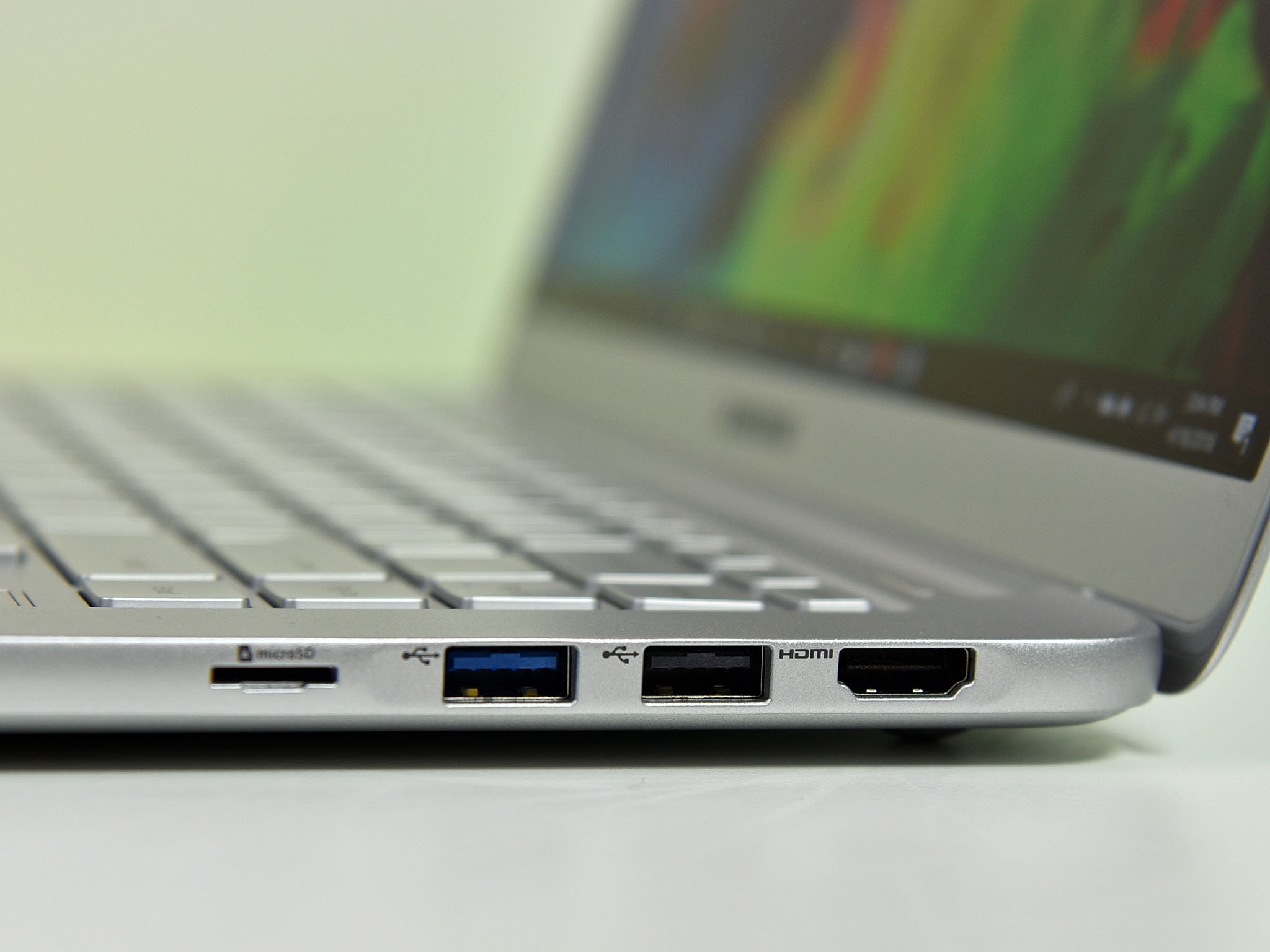
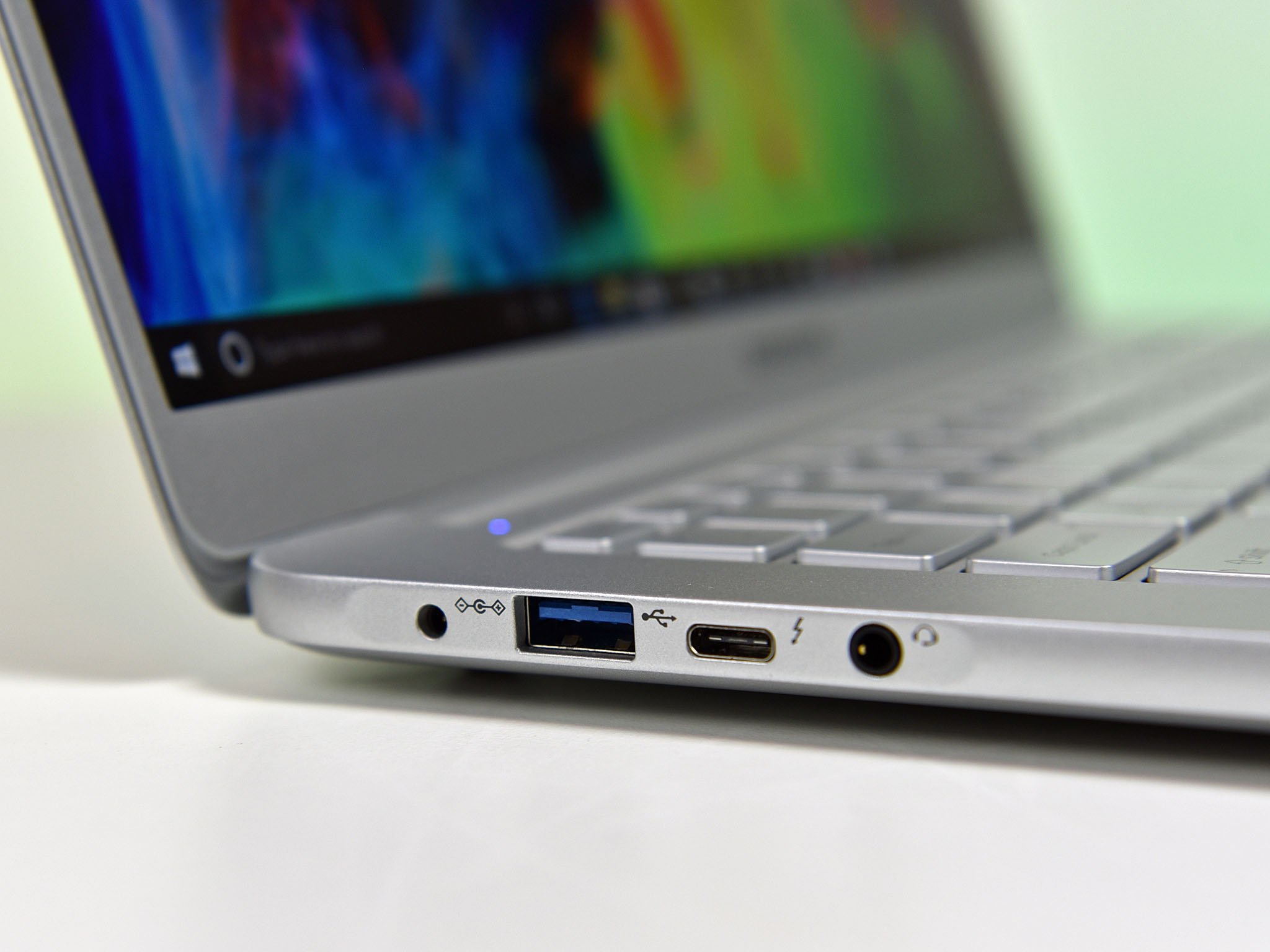
Even Samsung's proprietary software is, well, helpful. You get a batch of security-related apps like the security camera that snaps a user's photo if they enter a wrong password or try an unregistered fingerprint on the Windows login screen. There is also an app that adds silly "beautifying" filters to Windows Camera, which we haven't seen done before. All this software is optional and easily removed (they are apps from the Microsoft Store).
Overall, I liked the Samsung Notebook 9 15 for 2018. My only gripe is the full HD display, which is still very good but feels blocky at 15-inches. Then again, the target audience for the Notebook 9 15-inch is business folks, students, writers, and anyone who needs to write a lot (or run Excel). For them, this is an excellent choice.


Some customers will want a touch screen and pen, which is understandable. That is why Samsung also makes the Notebook 9 Pen (13.3") that supports those features. But for consumers who prefer a straight-up, clamshell laptop with exceptional performance, all-day battery life, the right ports, a large 15-inch display, and for it all to weigh under three pounds, well this is your device. I bought last year's model for my daily use, and I'm tempted again with this year's refresh.
Pros:
- Precision touchpad, excellent keyboard, quality display.
- Ultra-light 15-inch laptop.
- Full Thunderbolt 3 USB C port.
- Very long battery life with strong performance.
Cons:
- Full HD display resolution is low for 2018.
- Keyboard is somewhat mushy.
While I still prefer the Surface Book 2 (13-inch), the Core i7 model with 16GB of RAM and 512GB of storage is literally $1,000 more than the Samsung Notebook 9 15-inch — or even more if you don't need the more powerful Nvidia GPU. The asking price for the Notebook 9 15-inch is more than fair.
The Surface Book 2 will smoke the Notebook 9 for performance and features (save for Thunderbolt 3), but a lot people, including myself, simply don't need that power for our jobs. That's an important decision to make and Samsung is clearly balancing battery life, performance, and a lightweight design — and they achieve that with this laptop.

Daniel Rubino is the Editor-in-chief of Windows Central. He is also the head reviewer, podcast co-host, and analyst. He has been covering Microsoft since 2007 when this site was called WMExperts (and later Windows Phone Central). His interests include Windows, laptops, next-gen computing, and wearable tech. He has reviewed laptops for over 10 years and is particularly fond of 2-in-1 convertibles, Arm64 processors, new form factors, and thin-and-light PCs. Before all this tech stuff, he worked on a Ph.D. in linguistics, performed polysomnographs in NYC, and was a motion-picture operator for 17 years.
